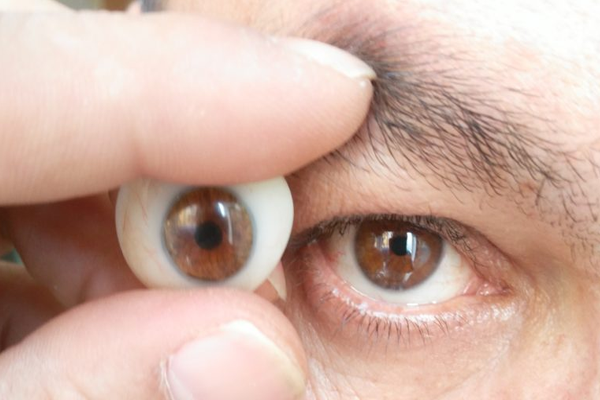Eye Prosthesis (Ocular Prothesis)
Ocular prosthesis, artificial eye or glass eye is a type of craniofacial prosthesis that replaces natural eye following an enucleation, evisceration, or orbital exenteration. The prosthesis fits over an orbital implant. Most often known as a glass eye, the ocular prosthesis takes the shape of a convex shell and is made of plastic acrylic.
Few of ocular prostheses are made of cryolite glass. An ocular prosthesis does not give vision. People with an ocular prosthesis are blind on the affected side and have monocular vision.
The prosthetic eye consists of oval, whitish outer shell finished to replace the white color of the eye. It consists of the round, central portion painted to look like the iris and pupil of the other eye.
Ocular prosthesis is recommended after an eye is removed due to damage or disease. Few reasons why an eye will be removed include injury, eye infection, glaucoma and eye tumors.
Surgery Types
The surgery is categorized into two types. Depending on the type of surgery, the type of prosthetic eye will vary:
Evisceration
In this method, the jelly-like inside of the eye is suctioned out. This is performed by making an incision in the front of the eye. However, the procedure preserves tissues in the outer eye, and eye socket.
Ocular Prothesis
In this method, the eye is cut away and removed from the eye socket. Depending on the type of eye condition and degree of eye damage, your doctor will decide on the type of method.
Who should go for prosthetic eye?
Prosthetic eye can enhance the appearance of the affected eye socket. Most people prefer wearing an eye patch or bandage. In people who lost the entire eye, an ocular implant and prosthesis prevent the tissues in the eye socket from growing to fill the empty space.
